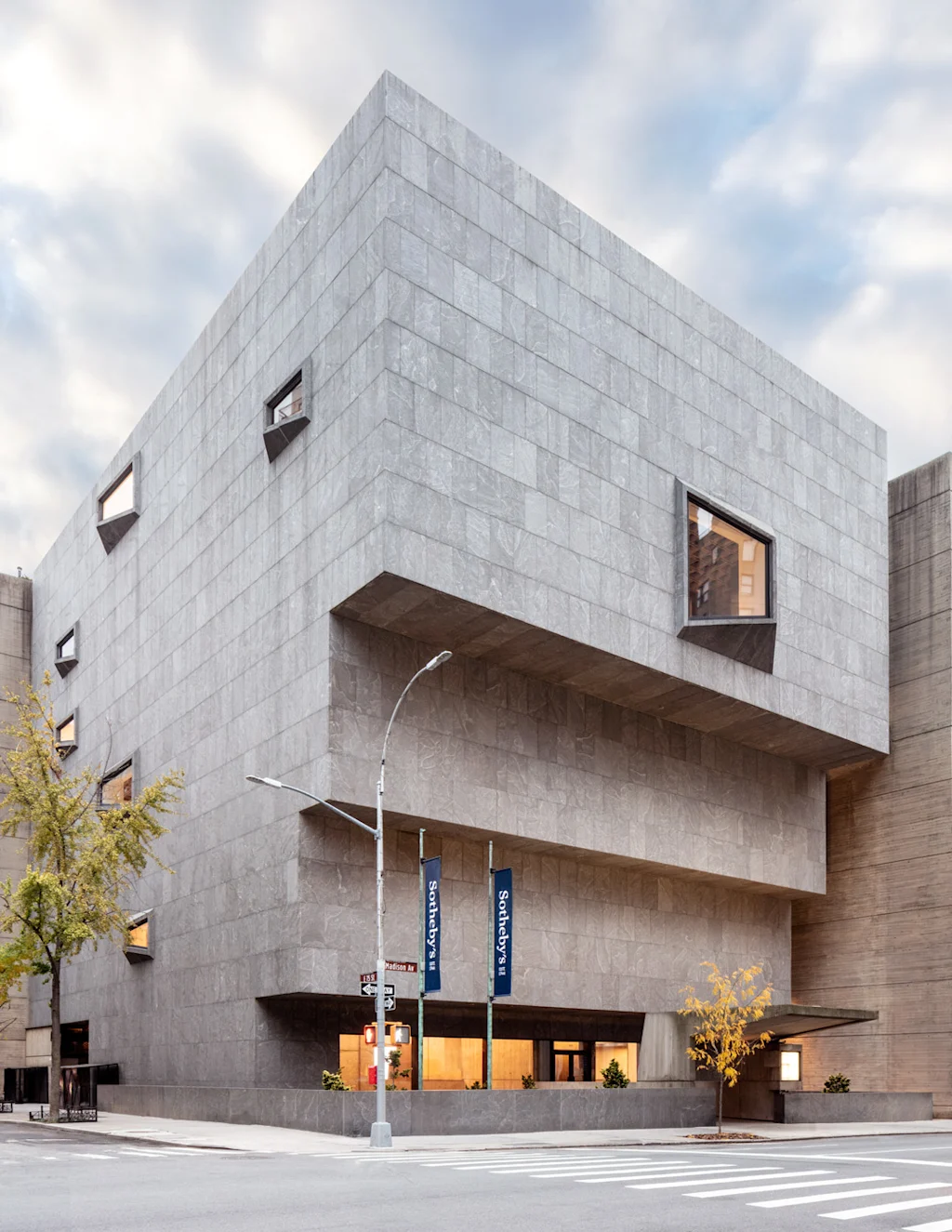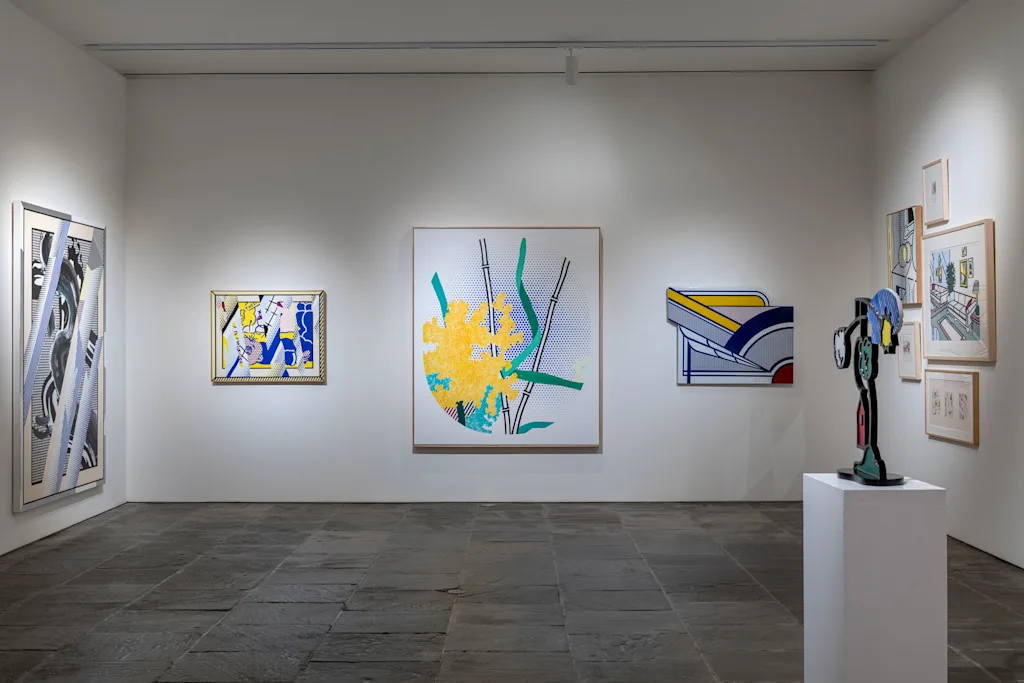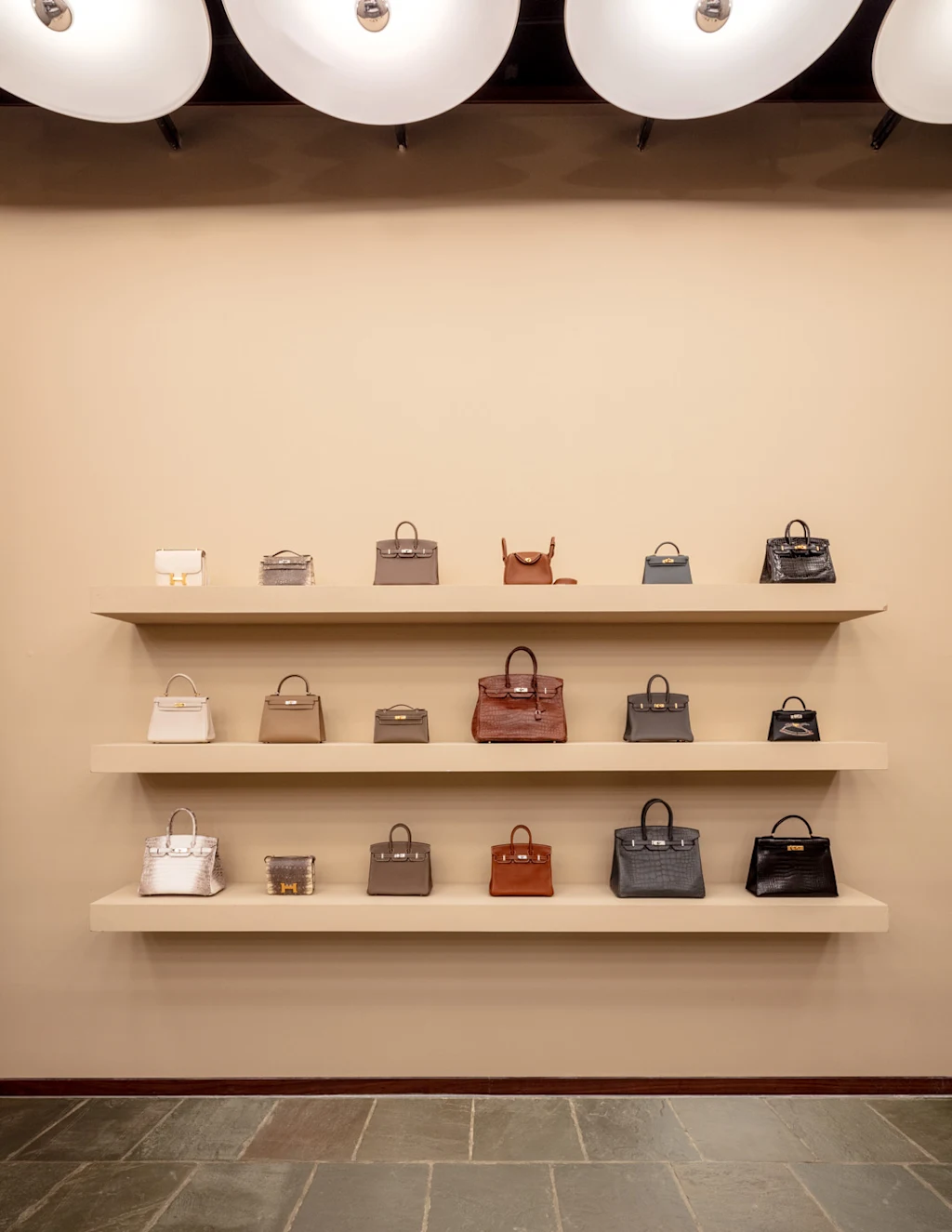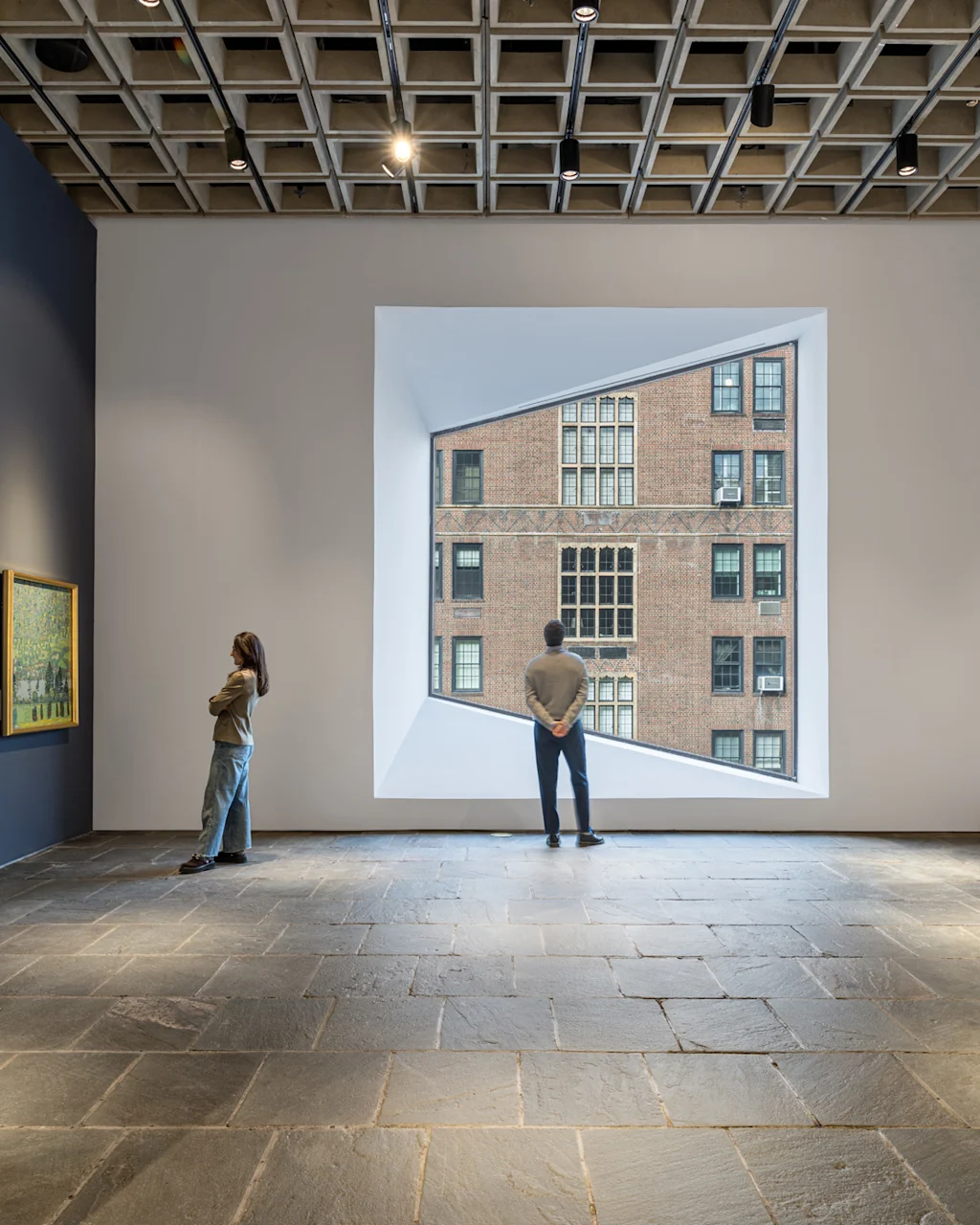Despite its status as an architectural celebrity, the Breuer building, commissioned by the Whitney Museum in the 1960s, has never had an easy relationship with New York City. With a hulking, top-heavy build, brooding dark-gray granite cladding, and nearly windowless facade, it’s as introverted as buildings come, standing confrontationally against its traditional Upper East Side neighbors.
Either you love it or hate it. Critic Ada Louise Huxtable described the building as an acquired taste akin to “olives or warm beer” (how appetizing) yet celebrated the “maximum artistry and almost hypnotic skill” of its...
Despite its status as an architectural celebrity, the Breuer building, commissioned by the Whitney Museum in the 1960s, has never had an easy relationship with New York City. With a hulking, top-heavy build, brooding dark-gray granite cladding, and nearly windowless facade, it’s as introverted as buildings come, standing confrontationally against its traditional Upper East Side neighbors.
Either you love it or hate it. Critic Ada Louise Huxtable described the building as an acquired taste akin to “olives or warm beer” (how appetizing) yet celebrated the “maximum artistry and almost hypnotic skill” of its namesake architect, the Bauhaus-trained modernist Marcel Breuer.
Now the historic building, also known as 945 Madison, has entered its latest chapter as the new worldwide headquarters for the 281-year-old auction house Sotheby’s. After a “careful and subtle” renovation by Swiss architecture firm Herzog & de Meuron, the space has now reopened to the public.
For Sotheby’s, the updated building demonstrates the future of auction houses as cultural destinations. It wants its new headquarters to be a place people come for exhibitions, art fairs, lectures, panel discussions, retail, and fine dining, while better serving its collector clients with bespoke, high-end art-buying experiences. What better place to bid on masterpieces than from inside one?
The hope is that the new building will bring a competitive edge to Sotheby’s. It arrives at a complicated time for the business, which has reportedly plunged into greater debt since billionaire Patrick Drahi took ownership in 2019. It’s also facing external headwinds as the art market slumps, prompting auction houses to diversify what they sell, cultivate new collectors, and digitize. Sotheby’s was responsible for $6 billion worth of sales in 2024, down from a record high of $8 billion in 2022.
Architecture to the rescue?
“It’s museum quality, but it’s the art auction house philosophy,” says Steve Wrightson, global head of real estate, facilities, and security for Sotheby’s. “I think people who’ve been here before are going to be pleasantly surprised.”

An untouchable history
Change hasn’t come easy to the Breuer building, and throughout its history suggestions of alterations have been met with severe skepticism. Soon after the Whitney Museum opened in 1966, it outgrew the quarters Breuer built for it, ushering in an era of uncertainty for the building. Numerous failed expansion attempts—by Norman Foster in the ’70s, Michael Graves in the ’80s, and Rem Koolhaas in the aughts—ignited battles royal between critics and architects that played out on the pages of dailies and weeklies.
Paul Goldberger, writing for The New York Times, described the building as a paradox: To add to it is to subtract from it. Eventually, the Whitney gave up on renovating and decamped for the Meatpacking District in 2015.
Then a series of adaptations came, demonstrating that something different might be for the better. In 2015, the Whitney leased the space to the Met, which commissioned a $15 million restoration by Beyer Blinder Belle that brought renewed luster to the building’s bluestone floors, concrete walls, and bronze fixtures. Then the Frick Collection moved into the space temporarily to critical appeal; turns out Breuer’s austere brutalism is a transcendent setting for traditional portraiture.
In 2023, the revolving door of tenants closed when the Whitney sold the building to Sotheby’s for an astounding $100 million. The acquisition was part of a real estate strategy that began at Sotheby’s about six years ago. Instead of housing all of its functions under one roof, as it did at its former York Street headquarters, the company decided to assemble a portfolio of spaces dedicated to a single purpose.
A building in Long Island City that Sotheby’s purchased in 2022 is now its processing and storage center. Though the company sold its York Street building to Cornell University’s medical school in October, it will lease four floors for offices. For auctions and exhibitions, it sought a location central to collectors with a street-facing presence. The Breuer building was “right at the bull’s eye” of the area the real estate team identified, Wrightson says. “This was the heart of the arts and culture scene in New York City,” he says.

Same structure, new function
While museums and auction houses both display art, the shift in function from a space that stewards culture to a sales floor represents a major conceptual shift. Because of this, Sotheby’s and Herzog & de Meuron (who collaborated with the local architecture firm PDBW on the project) had their work cut out for them, even though they always intended to apply a gentle hand to the renovation.
“Our deep respect for Breuer drove the project from the outset,” says Wim Walschap, a senior partner at the firm. Portions of the building are still under construction, including a new freight elevator and Marcel, the Roman and Williams-designed restaurant on the lower level. But the majority of the renovation, which encompasses a refreshed lobby and four floors of gallery and auction space above, is complete.

Still, preservationists worried that the Breuer building would be “permanently and unsympathetically” altered; they successfully lobbied the city to designate it as an individual and interior landmark, which affects the exterior plus the lobby, staircase, and portions of the restaurant visible from the street. Moreover, even though Sotheby’s is keeping the building open to the public, there’s a distinction between that notion and a “public building,” wrote Philip Kennicott in The Washington Post. “Museums exist to preserve culture; the art market exists to make a profit off the exchange of a commodity. Going to the Breuer will be like going to a wake.”
The actual experience is more like visiting your old home after the new owners have moved in: The spaces are familiar but different. “For the Breuer, we kept what carries identity and public life: structure and spatial sequence, primary materials and tactility, calibrated light, and the way a building meets the street,” Walschap says. “We removed later accretions that cloud the original intent and revived lost spaces where they clarified the experience.”

All the features that made the building distinctive—crossing over the moat of the sculpture garden, the luminous lobby ceiling, the large windows—are still there. But the concrete benches in the lobby are now vitrines, and the coat check in the corner is a retail space selling luxury lifestyle products like Patek Philippe watches, first editions of literary classics like Alice in Wonderland, and limited-edition Birkin bags. The original galleries, which were not landmarked, are structurally the same as before. However, the second level’s dark parquet floor has been changed to white oak. “We tried to get it refinished and it was just splintering so we had to replace it,” Wrightson says.
“A bit like theater”
The most major interventions to the Breuer involved modifying the building to better serve the logistical needs of Sotheby’s, which are more demanding than a museum due to the volume of objects and number of exhibitions it displays in a year. A museum might have a dozen special exhibitions over the course of a year; Sotheby’s averages 125. “It’s a bit like theater, but it’s also like a Formula One event,” Wrightson says of the precision turnover that happens. The goal is to be able to change an entire exhibition in 48 hours.
Most changes to the building that make this possible are completely out of sight from visitors: Herzog & de Meuron lengthened the loading dock and inserted a new freight elevator in what were formerly administrative spaces in the northeastern section of the building. This way, Wrightson says, “we can maneuver in the background.”

Sotheby’s has 30% more exhibition space than the building’s previous incarnation as the Frick Madison. To find this room, Herzog & de Meuron converted back-of-house and administrative areas into galleries, which sometimes resemble typical white-box galleries that feel like they could be anywhere. Instead of replicating Breuer’s tectonic sensibility in the new exhibition spaces, the firm channeled his intentions. “New work aligns with the existing rhythms and joints, remains legible and light touch, and, where possible, is reversible,” Walschap says.

Back when Breuer designed the building, the Whitney’s collection primarily consisted of painting and sculpture, and his structure is well suited for those mediums. Sotheby’s sells a far wider range of objects and artwork, so having a blank canvas gives the exhibition teams more options for viewing experiences. “We could have a dinosaur in a gallery one day and then the next day it could be a basketball jersey,” Wrightson says. “So we really have to be able to plan for all of those different needs.”
The fifth floor, which the Frick used for offices, is now primarily gallery space, plus flexible work space for about 50 Sotheby’s employees who need to be on-site. “The public hasn’t seen [this floor’s] windows and skylights for the better part of a decade,” Wrightson says. He thinks jewelry and watches, which benefit from natural light, will look especially good here.
A site for desire
Adaptability was a critical element of the renovation to support the range of objects Sotheby’s sells but also the new formats it uses to sell them, like online auctions and livestreams. To make installations efficient, the design team created a metal-framed wall system that straps to the concrete coffered ceiling that Breuer designed. And to give curators more options to illuminate art, Herzog & de Meuron created custom LED track lighting, which nestles into the concrete ceiling, that can be operated remotely.
The ceiling also proved to be an ideal mount for cameras that Sotheby’s uses for virtual sales. “When we first started doing livestreams back in June of 2021, it was an army of people who would come in with multiple giant boom cameras and we’d have massive control rooms set up with cables spread out everywhere. That’s gone,” Wrightson says. “Most of that is now happening remotely with what looks like joysticks.”

The Breuer building gives Sotheby’s more options for what an art buying, shopping, or appreciation experience embodies. The building’s fourth floor, which is a double-height space, will serve as the main gallery space most of the time and convert into an auction room whenever there is a sale. (Sotheby’s is still working out what the auction room will look like.) This also means creating more opportunities for exclusivity.
The level’s mezzanine, which also used to be offices, now features private viewing areas and skyboxes for clients who want a bird’s-eye view of the action. A former conservation studio is now a viewing area for works that require black lights to examine. Meanwhile, the auctioneers who prefer to have more intimate sales, like those who specialize in wine and watches, have the option to use the restaurant, which visitors will be able to access directly from Madison Avenue once it’s open next year. “They like more of a banquet-style table and more of a playful experience,” Wrightson says.
With its new headquarters, Sotheby’s architectural language is more aligned with the mass appeal of a major cultural institution than the art market. It’s trying to make auction houses cool. I can imagine regular museumgoers who haven’t stepped foot in an auction house before will be thrilled about admission-free access to see Kahlos and Klimts before collectors squirrel them away, just as I can see the thrill collectors might take in going shopping in what feels like a museum. As its viral auctioneer Phyllis Kao told Ssense, Sotheby’s really sells desire; a pedigreed set and setting enhances that effect.
During the peak of the Breuer building style in the 1980s, Village Voice critic Michael Sorkin summed up the challenges of retooling an architectural darling. “Adding to a masterpiece is always difficult, calling for discipline, sensitivity, restraint,” he wrote. “Above all, though, it calls for respect.”
Thankfully, outstanding original architecture remains crucial to all the audiences Sotheby’s wants to welcome into its world. Whether or not visitors will be “pleasantly surprised,” as Wrightson hopes, may come down to how they feel about the art market itself.